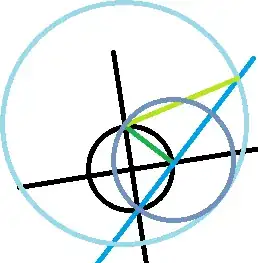With a string and a pencil, you can measure "one unit", that being the length of the string, or a portion of it. Then you can make a triangle "one unit by one unit." Further, this triangle can be a right triangle since you can perpendicularly bisect a line segment to make the second side. Then you have a hypotenuse side that is $\sqrt 2$ units in length. Because it is isosceles, you can cut it in half along the right angle and get two pieces that have leg lengths of $\frac 1{\sqrt 2}=\frac {\sqrt 2}2$, and so you can get legs as small as desired that are a multiple of $\sqrt 2$.
Next, you can make a second right triangle whose short leg is $\sqrt 2$, and whose hypotenuse is $2\sqrt 2$. Then the long leg has length $\sqrt 6$. Now you have your line of the given length.
The construction below attempts to demonstrate this process. Begin with one line (black), draw a line perpendicular to it (anywhere), draw a "unit" circle centered at the point of intersection, then the chord (green) between two consecutive intersections of line and circle has length $\sqrt 2$. Draw a circle having this radius (purple), then the diameter will have length $2\sqrt 2$. Draw a perpendicular to the chord (blue) that intersects the (purple) circle's center. Draw a circle (light blue) having radius equal to the diameter of the previous circle (purple), or $2\sqrt 2$. The chord where the (blue) line intersects the (light blue) circle has length $2\sqrt 6$, since the one side associated with the (green, light green, blue) triangle has length $\sqrt 6$.

